Behind the Scenes at BRWC with Sarah Midolo
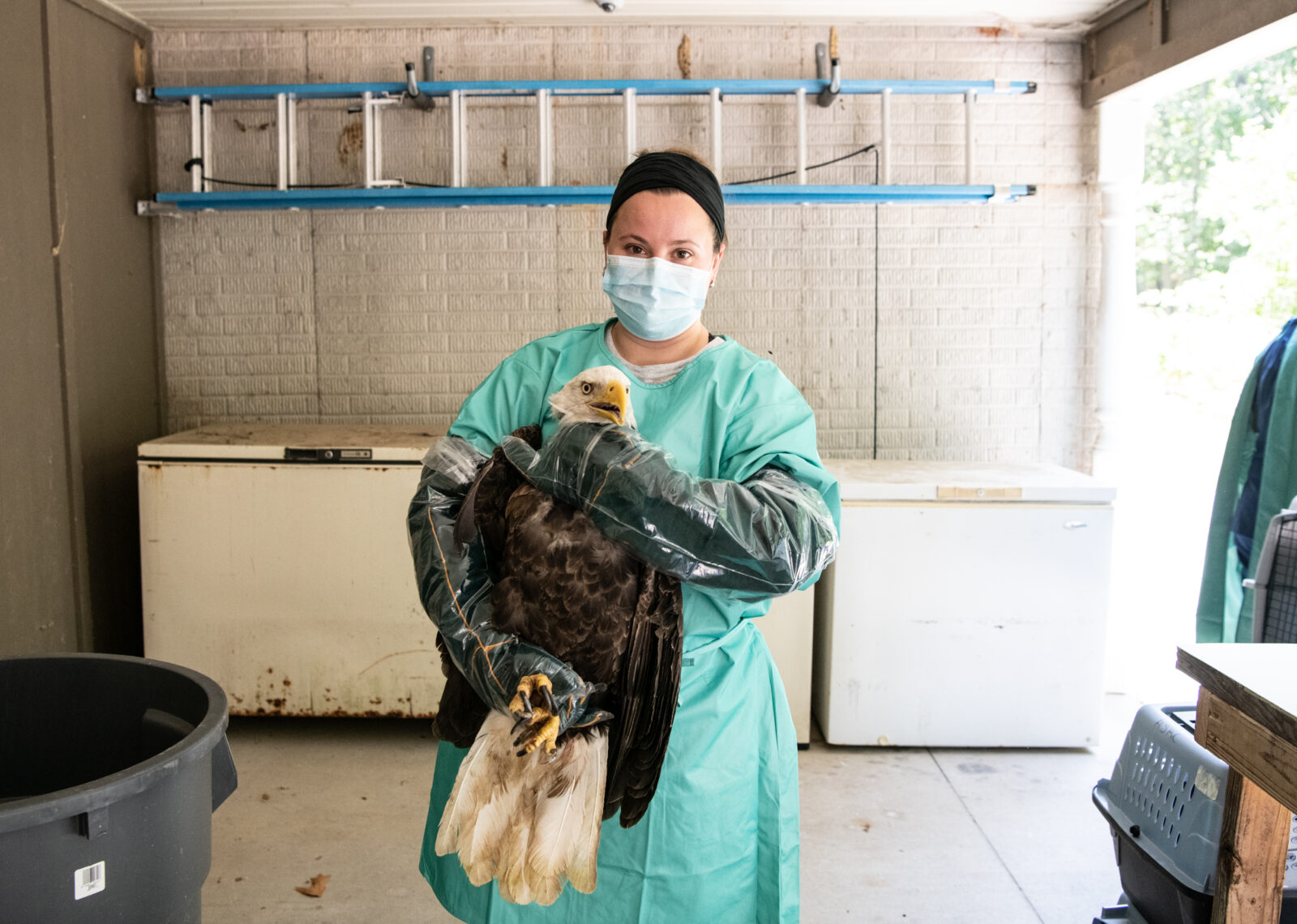
Written by Carlo Massimo | Photos by Michael Butcher
This is what’s called a story from the field: A ferocious great horned owl was discovered in a squirrel trap, dangling by one leg, flapping its wings in irritation. The leg was damaged but not irreparably. After medical attention, the owl returned to the woods.
Here’s another: A peregrine falcon, now called Goose, flew directly into an airplane taking off at Dulles. Today she sits in a tall, shady cage, half a wing gone at the joint, staring at visitors with an air of vacuous nobility.
Another: A fox named Jasper lived in a private Virginia residence, in defiance of the law. He’s quite used to humans now; in the middle of the day he curls up by the bars of his enclosure, resting his head on his elegant tail.
All of these stories happened in one place, the Blue Ridge Wildlife Center (BRWC), a teaching hospital exclusively for wild animals. The facility, founded in 2000 and much bigger than it first appears, sits in 17 acres of hardwood forest in a crook of the Shenandoah near Boyce. The center’s patients include nearly every local wildlife animal: raccoon, fox, skunk, chipmunk, opossum, turtle, owl, eagle, heron, snake, bat, frog, and whatever else people find injured by cars or limping through their gardens, except bear and deer. The 11 staff members and 25 volunteers at the center handle everything from surgeries to the kind of blood tests you might have had yourself at the doctor’s. They also carry out ecological research, offer educational programs, and occasionally drive out to capture an animal that someone reported but couldn’t catch themselves.
An integral part to this all-in-one hospital is rehab associate Sarah Midolo. Warm and vivacious behind her mask, Midolo has a hand in everything that happens at the hospital, from intake to the care of baby animals to the humane euthanasia of those beyond repair. (Don’t let this frighten you. “We’re really proud of our humane euthanasia here,” she shares. “Wildlife has to be basically perfect to be released.”)
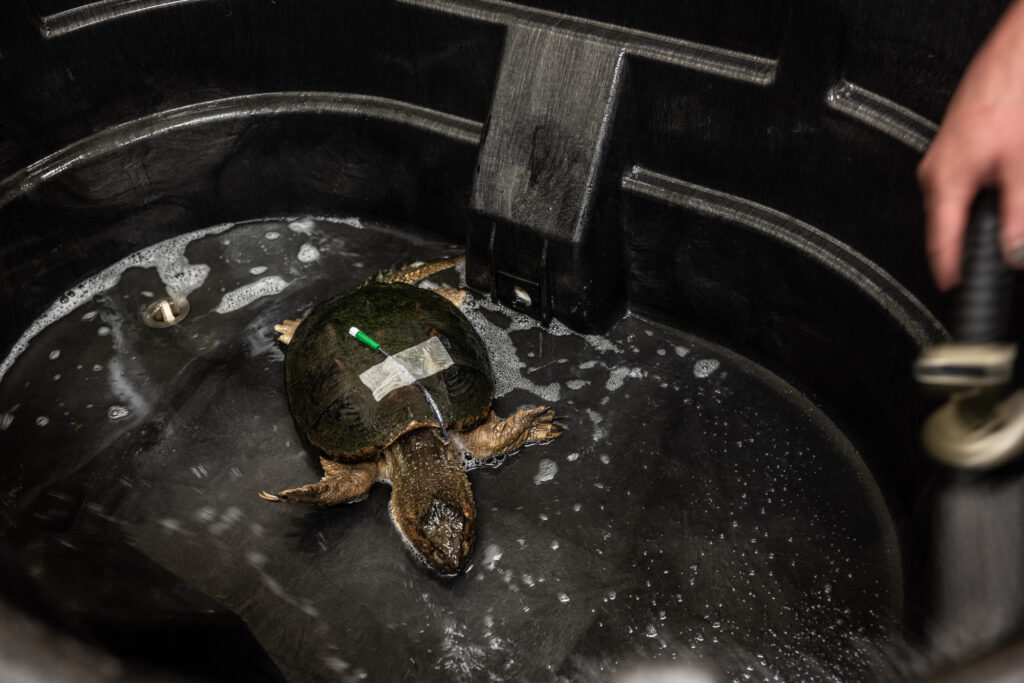
Midolo is a Purcellville native and still lives there. She graduated from Elon University, in North Carolina, in 2019, with a degree in environmental and ecological studies and a minor in geography. A post-graduate fellowship with the U.S. Geological Survey convinced her that mapping was not her métier. She ended up, instead, in the world of animal rehabilitation, which suited her better: first at the Virginia Living Museum in Newport News, then with a veterinarian, and finally, in January of this year, at BRWC.
“I didn’t realize this could be a career,” she admits.
The work suits her, even more than domestic practice. “I really did miss rehab. It’s like the difference between an emergency room and an elderly folks’ home in terms of predictability and pace.” In the summer she’s at the center before 8 a.m., and the work varies day by day. She helps with patient admission, and pitches in whenever one of the three on-site vets needs a hand. She designs enclosures and plans enrichment exercises, which are games that mimic the challenges of an animal’s normal life and keep them mentally stimulated during their captivity. Baby foxes, it seems, love playing with balls; other animals dig through sandboxes for food.
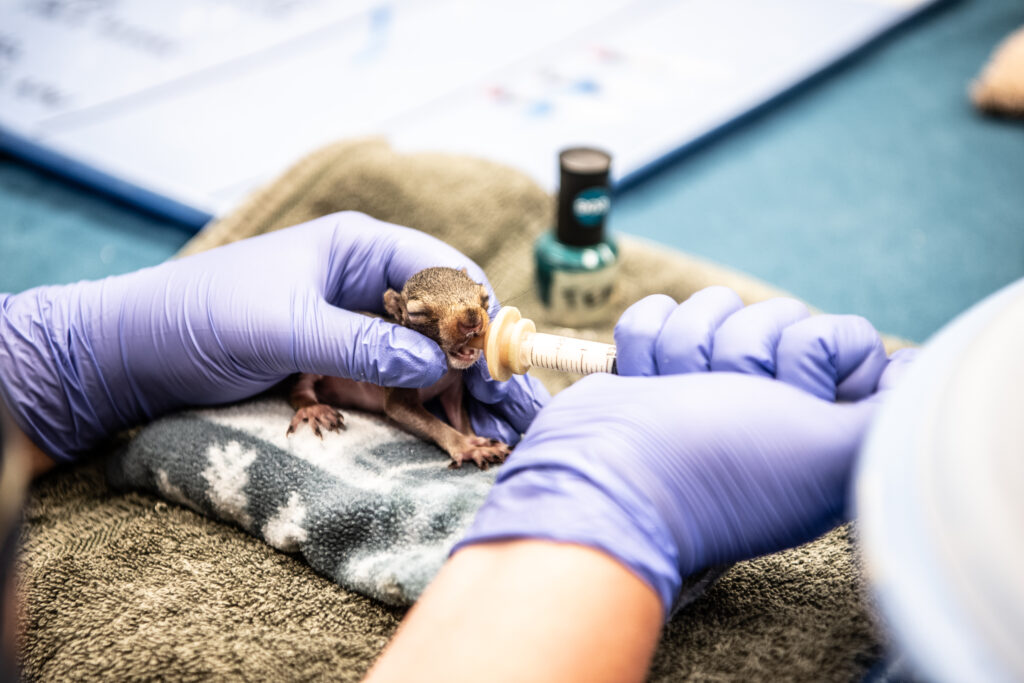
Midolo takes care of the BRWC’s babies as well, peeing them and feeding them at intervals (“I have timers going off all day”) and checking on their weight and general condition.
Then around 6 p.m., “the day just suddenly ends,” she says with amusement.
It’s exciting work, if not always pleasant. The occasional instances of neglect or abuse would challenge anyone, and the job requires rather intimate terms with death. “I recommend a good therapist,” Midolo laughs. This year has been particularly difficult. Avian influenza, better known as bird flu, has spread at an alarming pace from Virginia’s waterfowl population to the bird population in general. It’s a lethal, highly contagious virus, and has been reported in raccoons and foxes as well. The hospital does not allow birds to be brought in the front door, with the other animals; intake happens outside, behind layers of protective gear, and the patient has to sit under observation for over 24 hours before admittance. The halls of the hospital reek of bleach, and every door has its footbath.
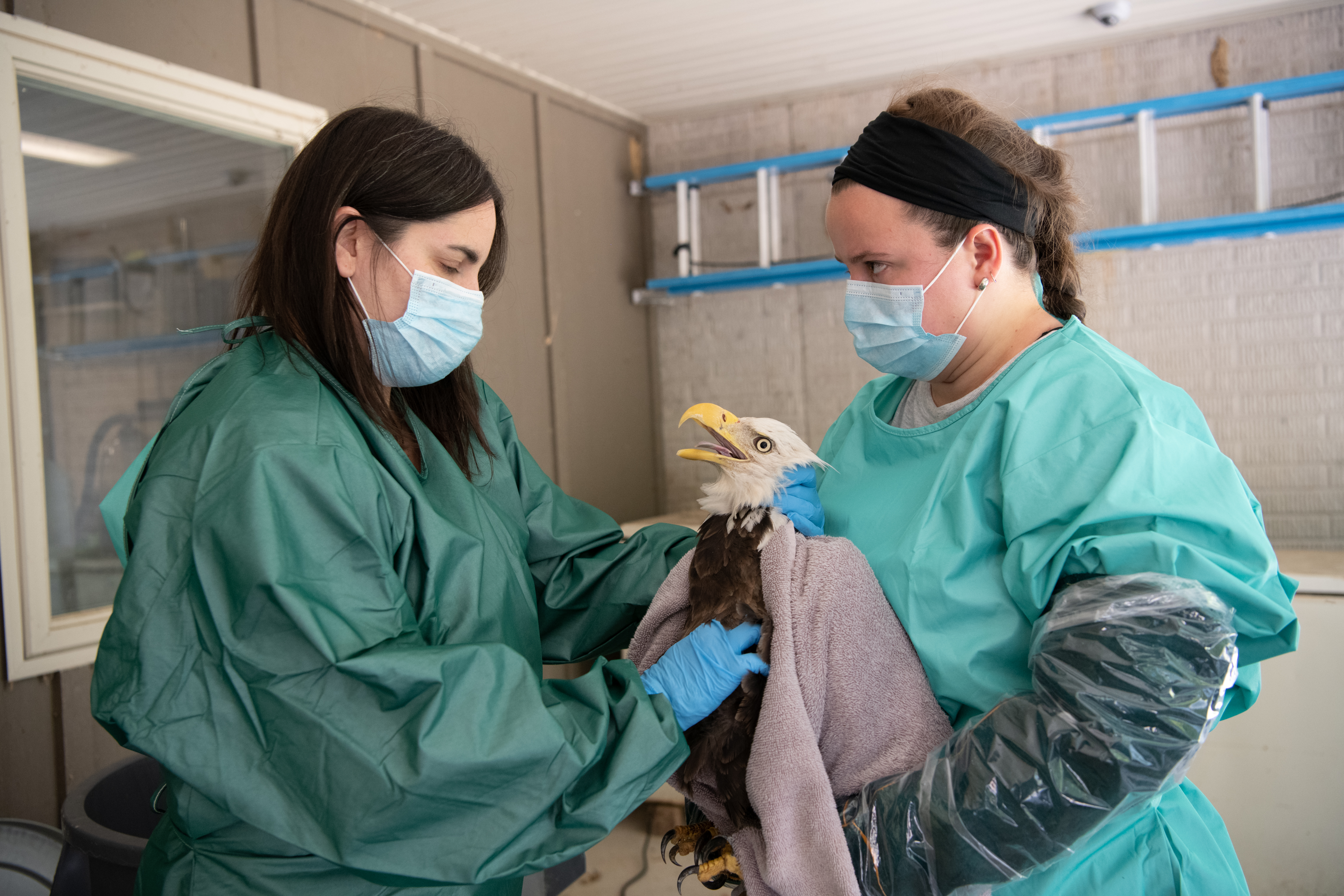
For all that, the BRWC staff don’t seem tense or unduly concerned, as they work their way through room after room of marvels. A laboratory with a centrifuge and microscope and machines for detecting lead. A kitchen filled with fruit and grain and the rich smell of a freshly split squash. A mealworm colony for feeding birds. Egg incubators DIYed into oxygen chambers. Three chimney swifts huddled on a wall in staggered order, vaguely vaudevillian. Two turtles with injured feet, swimming lopsided; one of their colleagues had recently been to surgery after swallowing a fish hook.
The hospital keeps some animals as ambassadors, for educational purposes and to demonstrate the importance of wildlife rehabilitation. These animals must be juveniles when they arrive, and must be too injured to release but healthy enough to live comfortably, without injuries or diseases that grow worse with time. Goose the magnificent falcon is an ambassador, as is Jasper the handsome fox. There are vultures as well, and an eagle, and a screech owl named Dopey. Rejected by her parents, Dopey stalks around the floor of a large indoor cage, perfectly able but unwilling to fly and looking much sweeter than she actually is.
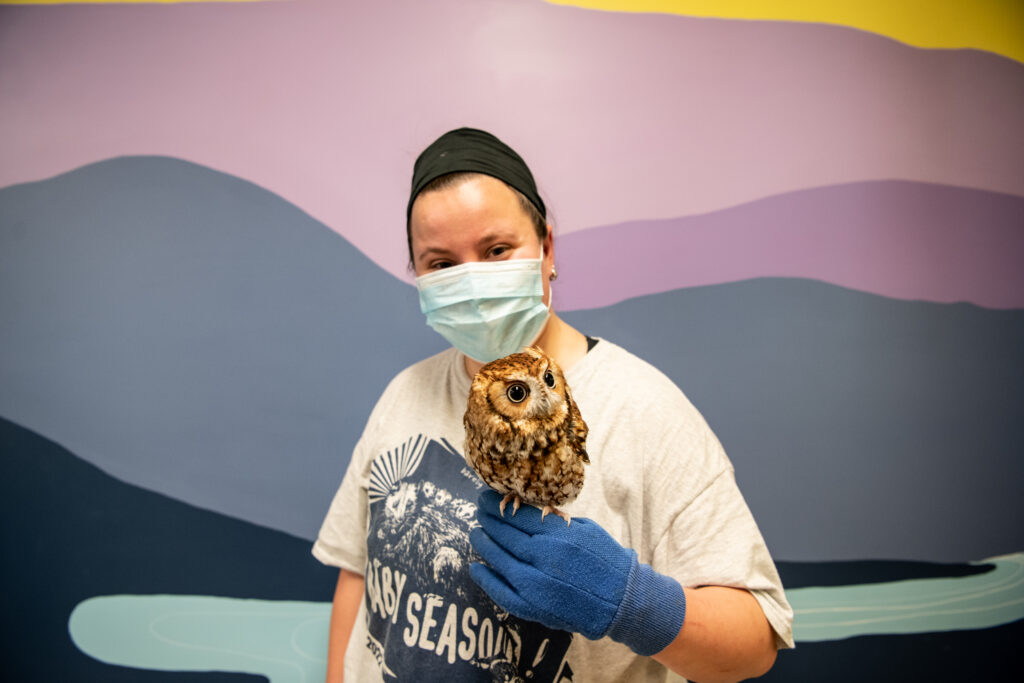
Midolo thrives amid this huge variety. Hers is a “continuously growing knowledge set,” strengthened by the conferences she and her teammates attend every year. The commitment is more remarkable for the fact that BRWC is entirely private, and receives no public funding. But it’s not surprising. The BRWC attracts people with energy and restless intelligence — people like Midolo, who is now beginning to plan the next steps of her career. She’s still in her early 20s, but rehab is a young person’s game. The physical side alone, wrestling animals at intake and hauling around enclosure materials, inevitably wears out the joints. It can only last so long as a career. Midolo is leaning toward the education side of wildlife rehabilitation, and probably a master’s degree.
Consider it another story from the field, then: Young adult human arrives at BRWC and makes steady progress. Date of release unknown. Prognosis excellent. An exemplary ambassador. ML
Published in the September 2023 issue of Middleburg Life.








